The Gallipoli Cognato forest is part of the Municipalities of Accettura, Calciano and Oliveto Lucano and occupies a total area of 4,159 hectares. The forest, deriving from the fusion of two distinct wooded estates, respectively the wood of Gallipoli, of 1,117 ha, and the Cognato wood, 3,357 ha, is characterized by a remarkable altimetric variability: it passes, in fact, from altitudes close to 200 meters, bordering the Basento riverbed, at 1,319 Mt of Mount Impiso. In the territory, it is possible to distinguish different forest and plant environments, some of which occupy vast and continuous extensions, while others have a point and localized diffusion.
This is the undisputed realm of helichrysum, cysts and arboreal heather, whose root was once used for pipe making. Near the area of Palazzo, currently the central nucleus of the services and offices of Gallipoli Cognato Park, the oaks, dominant vegetative species of this area, take on majestic porters interspersed with specimens of white hornbeam, maple, hornbeam. At the altimetry level of the Turkey oak, but with a smaller distribution, the farnetto grows, particularly widespread at Monte Croccia. Localized is the presence of the lime tree that, in the most inaccessible places, grows vigorously and renews with relative rapidity.
The herbaceous flora is rich in cyclamen, anemones, violets, daisies, vinca, with early blooms between the beginning of spring and autumn. On Dolomiti Lucane and in the surrounding areas, there are several species of wild orchids making the rural landscape fascinating and colourful.
The presence of safflower in grazing clearings is interesting. In correspondence with the humid valleys, streams and watercourses, we find the oxifillo ash, an endemic species of Basilicata, the aspen poplar, the white poplar, the black alder, and the willows.
The low and bushy vegetation consists of mosses, maidenhair ferns, lichens. Several places have been reforested with the introduction of Aleppo Pine, Maritime Pine, Larch, cypress. Interesting was the introduction of the white fir in Lake Cirminale. There are numerous fauna species frequenting the forest with species that in some cases have disappeared from other areas of the Apennines: badgers, wolves, martens, weasels, hares, a few marten, and porcupines.
Among the amphibians we have the spotted salamander, the toad, the ululone; among the reptiles the gecko, the luscegnola, the grass snake, the hummingbird, and the common viper. The bird population is characterized by a large quantity of different species of passerines, great tit, robin, nightingale, blackbird, and of piciformes: woodpecker, green woodpecker. Falcon forms are also widespread: kite, goshawk, buzzard, sparrow hawk, owl, tawny owl, barn owl.
Then there are two very rare butterflies, protected and endangered species, object of protection actions by the Park: the Melanargia arge and the Eriogaster Catax.
Among the significant invertebrates, there is the presence of the longicorn beetle Agapanthia maculicornis and the heliopter Daracoris olivaceus.
The forest is mainly composed of broadleaf hardwoods (3,700 ha), a simple copse of oak and turkey oak (90 ha), mixed forests of resinous and broad-leaved trees (44 ha); the rest consists of arable land, pastures and bare meadows, bushy. The undergrowth, up to a height of 600 m, is rich in sclerophyllae typical of the Mediterranean scrub; among these the most widespread are the Phllirea angustifolia, Rhamnus alaternus, Pistacia terebinthus. Between 600 and 900 meters, the undergrowth is enriched in spring with blooms of Cytisus villosus, and among the oaks begin to appear with shrub bearing the apple and the maple. The holly, the ern, the ivy and the pope's coin are part of the undergrowth. In the sunniest area, the scrubland gives way to the garrigue.







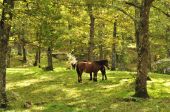
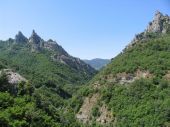
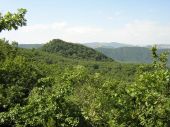
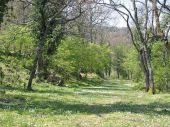
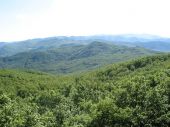
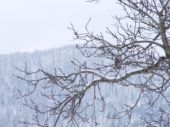
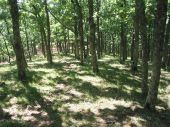







 Il presente sito si ispira alle nuove linee guida di design per i servizi web delle PA
Il presente sito si ispira alle nuove linee guida di design per i servizi web delle PA